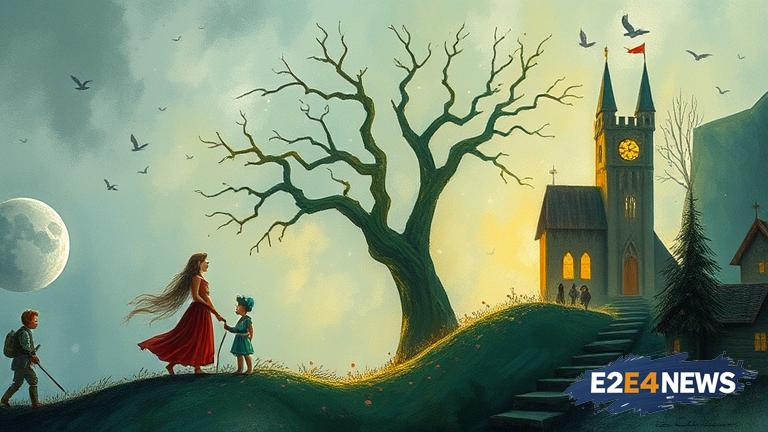Fairytales have been an integral part of human culture for centuries, with their origins dating back to ancient civilizations. These stories have been passed down through generations, captivating audiences with their magical worlds, memorable characters, and timeless themes. Despite the advent of modern technology and changing societal values, fairytales continue to appeal to our imagination, providing a unique window into the human experience. One reason for their enduring popularity is their ability to tap into our deep-seated desires and fears, often using symbolism and metaphor to convey complex emotions and ideas. Fairytales also offer a unique form of escapism, allowing readers to temporarily forget about the stresses of everyday life and immerse themselves in a world of wonder and enchantment. Furthermore, these stories often feature relatable characters, making it easy for audiences to become invested in their journeys and root for their triumphs. The themes present in fairytales, such as good vs. evil, love, and self-discovery, are also universally relevant, transcending cultural and geographical boundaries. In addition, fairytales have played a significant role in shaping our collective cultural heritage, influencing art, literature, film, and other forms of creative expression. Many classic fairytales, such as Cinderella, Snow White, and Sleeping Beauty, have been retold and reinterpreted countless times, with each iteration offering a fresh perspective on the original story. The psychological and sociological insights offered by fairytales are also noteworthy, providing a unique lens through which to examine human behavior and societal norms. For instance, the tale of Beauty and the Beast can be seen as a commentary on the dangers of prejudice and the importance of looking beyond superficial appearances. Similarly, the story of Hansel and Gretel serves as a cautionary tale about the consequences of greed and the importance of resourcefulness in the face of adversity. The impact of fairytales on children’s cognitive and emotional development is also significant, helping to foster imagination, creativity, and critical thinking skills. Moreover, these stories can serve as a valuable tool for teaching moral lessons and promoting emotional intelligence. In recent years, there has been a resurgence of interest in fairytales, with many authors and filmmakers reimagining classic stories for modern audiences. This trend is a testament to the timeless appeal of fairytales and their ability to evolve and adapt to changing societal values. The rise of digital media has also made it easier for people to access and engage with fairytales, with many online platforms and apps offering interactive storytelling experiences and virtual reality adaptations. As a result, fairytales continue to captivate audiences around the world, inspiring new generations of readers, writers, and artists. In conclusion, the enduring appeal of fairytales is a testament to their power to inspire, educate, and entertain, offering a unique window into the human experience and a shared cultural heritage that transcends borders and boundaries. With their rich symbolism, memorable characters, and timeless themes, fairytales are sure to continue captivating our imagination for generations to come. The study of fairytales also offers a fascinating glimpse into the human psyche, revealing our deep-seated desires, fears, and anxieties. By examining the evolution of fairytales over time, we can gain a deeper understanding of the cultural, social, and historical contexts in which they were written. Ultimately, the appeal of fairytales lies in their ability to transport us to a world of wonder and magic, where anything is possible and the boundaries of reality are stretched to their limits.
